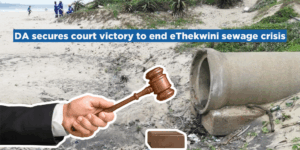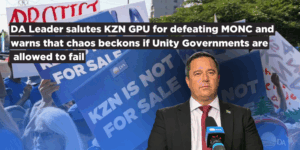Finally, after the pressure from the industry and the Democratic Alliance (DA), both at national and provincial level, the Northern Cape Department: Agriculture, Environmental Affairs, Rural Development and Land Reform has released part of the R35 million drought grant fund that has been withheld since February this year amidst a severe drought plaguing the area.
The Northern Cape is still grappling with the worst drought in 100 years. The poor co-ordination of support towards the farmers has worsened the situation in many areas. On 30 September 2020, President Cyril Ramaphosa addressed the United Nations (UN) summit on biodiversity where he called for climate friendly agriculture to be implemented. While the DA supports the President’s sentiment, it must be followed through with actions on the ground and in this regard the Department of Agriculture, Land Reform and Rural Development (DALRRD) and Cooperative Governance and Traditional Affairs (CoGTA) have failed utterly.
According to the Early Warning Committee’s June 2020 report, there are indications of four areas that are especially affected by the current drought. Van Wyksvlei, Springbok, Loeriesfontein and Kenhardt have received well below their long-term averages of rainfall in the past four years.
| RAINFALL RECEIVED (mm) | |||||
| Area | Long Term Average (mm) | 2017 | 2018 | 2019 | 2020 |
| Springbok | 135 mm | 64 mm | 67 mm | 48 mm | 7 mm |
| Loeriesfontein | 220 mm | 81 mm | 109 mm | 78 mm | 27 mm |
| Kenhardt | 155 mm | 107 mm | 97 mm | 43 mm | 4 mm |
| Van Wyksvlei | 190 mm | 147 mm | 101 mm | 57 mm | 100 mm |
According to the report, R413.1 million over a three-month period would be required to allow for earlier recovery post the drought.
Unless government steps in, the report has estimated an annual loss of R495 million for the next six years and if the entire farming and value-added economy is considered, the loss could skyrocket to R1.061 billion annually over the next six years.
The report further states that these communities could experience 6 267 jobs losses per annum over the next six years without the necessary intervention.
If cabinet clusters of the portfolio of DALRRD, National Treasury, CoGTA and the provincial MEC responsible for Agriculture and Environmental Affairs were not operating in silos, surely they could have made an effort to consider this report and implement at least part of it to reduce the negative impact of the drought and stimulate the economy to prevent the blood bath of future job losses and potential food insecurity.
The DA reiterates its previous calls that farmers affected by drought in the parts of Northern Cape, Western Cape, North West and Eastern Cape require coordinated support and communication. Their debts are rising and becoming unbearable. National Treasury has been largely absent from providing support when required in agriculture. In the past, the Land Bank would host drought relief funds that would be channeled through the Bank in the form of cheaper loans. But for Land Bank to provide these drought relief funds; the drought in these areas must first be declared as States of Disaster. The reality is that the Land Bank failing our farmers now is a reflection of the shareholder that is in chaos, choosing to support a defunct airline at the expense of food security and job losses. The downgrade of the Land Bank by Moody’s could worsen food insecurity to South Africa’s most vulnerable citizens.
The DA make another call on CoGTA Minister Dr Nkosazana Dlamini-Zuma to reinstate the classification of the drought as a State of Disaster that the Head of the National Disaster Management Centre, Dr Mmaphaka Tau, revoked on 16 July 2020, and to gazette all these areas that are still affected by drought in all parts of the country.
Get to know newly elected DA leader, John Steenhuisen, and invest in the 2021 Local Government Election campaign. Click here.




